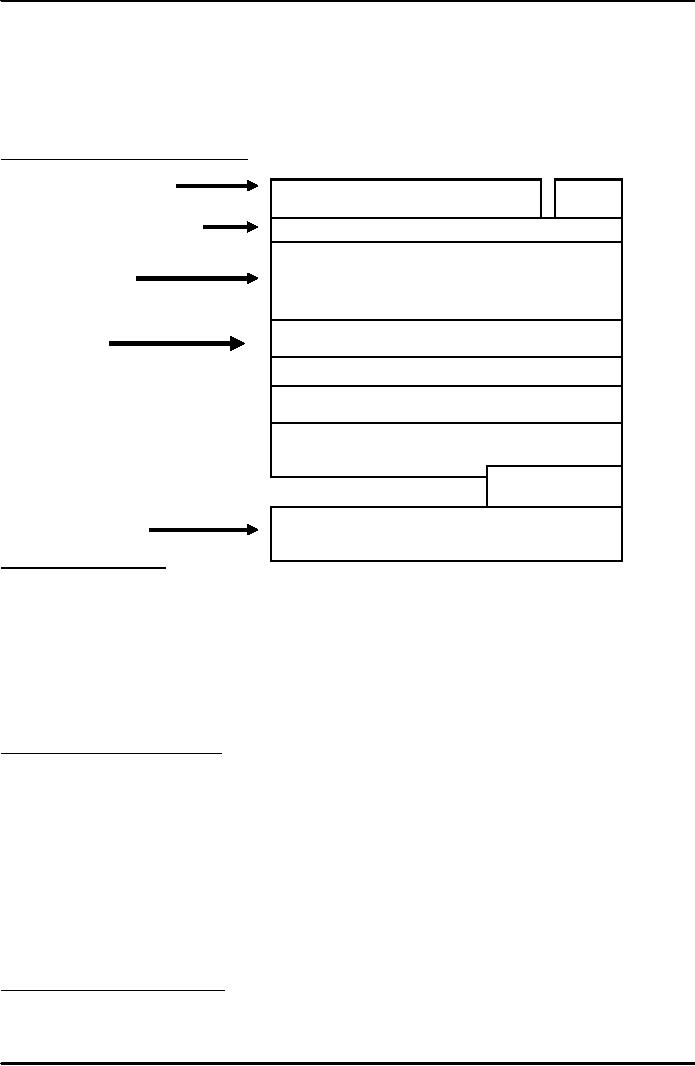 |

Fundamentals
of Public Relations MCM 401
VU
Lesson
7
PRESS
RELATIONS IN PR
Overview
In
this lecture we will study about
press relations. Basically what
are its methods and
how does a PR
professional
maintain these and what are
basic ingredients for good
press relations. The students
will also be
apprised
about the definition of press relations
and explain about News and
news releases and how
should
these
be written.
6
Points For Good Press
Relations
A
good public relations practitioner
will take following six
steps to maintain good relations with the
press
1.
He will maintain TWO way
Relationship.
2.
He will by his conduct establish
reputation of reliability.
3.
The press will always
provide good copy.
4.
He will always cooperate
with the press in providing
material.
5.
As and required he will provide
Verification Facilities.
6.
The PR practitioner will
build personal rapport with
the Media
Definition
The
word Press, as commonly
known should not be confined to
press. It
covers
all news media, like, radio,
TV & cinema.
The
objective of press relations is to `create
knowledge & understanding.'
and
not what the employer or client wants to
be printed for favorable
mentions
All
press material should be of 'interest &
value ' to the readers,
listeners
or
viewers, as the material is likely to be
used and the resultant
publicity
will
ultimately please the client or
employer.
What
is News.
`News
is information which is not already
known to recipients.
News
Release.
Whenever
a news release has to be
prepared following essential
points should be kept in
mind.
1.
The
test of a PR story.
It
means that it has news
worthiness i.e. the information
will be of interest to readers
and is therefore worth
publishing.
2.
Bad
releases are bad PR.
A
news release creates an
image of the organization in the critical eye of the
editors. A badly written
release
will
create a very bad impression of the
sender's organization.
3.
Good
presentations.
Primarily
following 4
things
contribute to happier relations .with the
press.
1.
Releases
should be composed in the style
acceptable to journalists.
2.
Release
should be in manuscript style, and
not in business letter
style.
3.
Releases
should be appropriate to the journals to which they
are sent.
4.
Carefully
select journals to which releases
are sent and moreover send
them well ahead of time of
publication.
How
Should The News Releases Be
Written)
The
easiest way to learn how to
write news release is to
study newspaper reports and
observe how they are
written:
there is a special technique.
Following TWO
fundamental
characteristics will be apparent
from
reading
newspapers.
The
subject
is
stated in the opening words.
A.
The
opening paragraph is a summary
of the
whole story.
B.
(
The 7 Point
Formula
1.
Subject - What is the story
about?
2.
Organization - What is the name of
Organization?
17

Fundamentals
of Public Relations MCM 401
VU
3.
Location
- Where is the organization
located?
4.
Advantages
- What is new? What are the
benefits?
5.
Details
What are the colors,
sizes, prices, performance
figures or other
details?
6.
Applications
What are the uses &
who are the users?
7.
Source
Is this different from location,
e.g. location might be where
the work is done, source
will
be
the head office.
(Model
Layout Of A Press
Release)
Simple
identification
LOGO
NEWS
from ABC Company
Brief
identification of story
Headline.
Opening
paragraph, summary of
whole
First
paragraph not indented
story,
subject in first few words,
brief
Double
spacing
name
of organization, Location,
highlights
of
story.
Good
margins both
Advantages:
what is new,
different?
sides
Applications:
uses and users.
Details
: specifications , prices.
Source
of product or service: full
name,
address,
telephone number of
supplier.
Writers,
name
and
Title.
Clear
information without
Name,
Address, telephone no. of
Excessive
display
organization.
or PR Consultancy
WHY
7 Point Formula?
The
value of the above 7 point
formula can be summarized as
below:
1.
It
provides a Checklist of data before
writing a press
release.
2.
It
is the plot for the release,
indicating the sequence of
information.
3.
It
provides a checklist to apply after writing the
release.
4.
It
proposes an orderly sequence of
information.
5.
First
paragraph should always state the
subject, the name of the organization(although
not the full
business
address.)
6.
Last paragraph should state
full name, address and
telephone numbers of the organization.
Secrets
Of Good News Release.
In
order to explain further
following key points are
enumerated below for writing
a good news release.
Good
press release should have short
paragraphs, , short sentences
&
simple
words.
The
story should not be more than ONE
page.
The
superlatives should always be avoided
,such as "the world's biggest"
Avoid
vague generalizations like
`economical - money saving"
etc.
Do
not use cliches like
"unique, wide range, this point in time
"etc.
Do
not quote remarks from
leaders unless they have
something special
and
or original to say.
Presentation
of a News Release.
For
effective and authentic news release
following points should never be ignored
as the release is a
manuscript.
18

Fundamentals
of Public Relations MCM 401
VU
�
Press
releases should be typed on printed
letter head.
�
Important
points should be given headlines.
�
Subheadings
will help in emphasizing
points.
�
Indented
paragraphs will always give
good looks and effective
response.
�
Capital
Letters should be used only when
necessary.
�
Underlining
special points will help in
easy identification.
�
Full
points or full stops in abbreviations
should only be used when
necessary.
�
Figures.
Will substantiate your
message or claims.
�
Dates
are important for up to date
information..
�
Continuations
will inform the reader that
the story is still
continuing.
�
Quotation
Marks are essential for
quoting sayings.
�
Authorship
gives the ownership of the story or
release.
19
Table of Contents:
- INTRODUCTION & BRIEF HISTORY:Definitions Of Public Relations
- HOW DOES PR WORK?:OVERVIEW, Formulation of policy
- PUBLIC RELATIONS DISTINGUISHED:Size of a PR Department.
- PUBLICS OF PR:Expanded Publics, Few Examples Of Publics
- PLANNING PUBLIC RELATIONS PROGRAMMES:Print Media, Electronic Media
- MEDIAS OF PR:Media for External Publics, Principles of Good Press Relations
- PRESS RELATIONS IN PR:What is News, Secrets Of Good News Release.
- CREATED PRIVATE MEDIA:Private Media, New Forms of House Journals
- SPECIAL USES OF PUBLIC RELATIONS:Crisis Management, Skills Of PR
- BUDGETING IN PR:Labour, Office Overheads, PR & Photographs
- PUBLIC RELATIONS PROBLEMS:Defining PR problems, C’s of PR explained
- METHODS OF COMMUNICATION:Psychology of Public Relations
- PR IN VARIOUS ORGANIZATIONS:Techniques of Trade Association PR
- PR IN LABOUR UNIONS & RELIGIOUS GROUPS:Community Public Relations
- PR IN EDUCATIONAL INSTITUTIONS & IN MEDIA CHANNALS
- USING ADVERTISING FOR P R COMMUNICATION:Role Of PR
- ROLE OF PUBLIC RELATIONS IN MARKETING:How To Educate The Market
- PUBLIC RELATIONS AND CORPORATE STRUCTURE:Corporate Identity Essentials
- E-PR & ITS TOOLS:Immediate Points To Consider, Using Email As PR Tool
- SPONSORSHIP—AN IMPORTANT PR TOOL:PR & Communication Audit
- HOUSE JOURNALS:Possible Publics Of House Journals, Exhibitions & PR
- CRISIS MANAGEMENT IN PR:Plan Of Action Adopted, Interview at your place
- ADVERTISING IN PR:Broad Objectives Of Advertising, Direct Advertising.
- INTERNATIONAL PUBLIC RELATIONS:Media Used, Within Store Contacts
- PUBLIC RELATIONS CONSULTANCY:Disadvantages, Mass Communication
- PUBLIC RELATION’S ROLE IN MARKET EDUCATION:Kinds Of Markets
- MODERN DAY VALUES OF PR:Ethics Of Public Relations
- CHOICE OF MEDIA FOR PR COMPAIGN:Communication Channels & Media
- PR TECHNIQUES:Tactics & Techniques
- DESIGNING PR COMPAIGNS:Definitive Mission statement, Reputation.
- PUBLIC OPINION:Identifying Priority Publics, If Goal Is Attitude Change
- PUBLIC RELATIONS AND RESEARCH:Planning Phase Of Research
- PR AND RESEARCH:Unobtrusive Measures, Questionnaires For Survey
- PROBLEMS SOLVING STRATEGIES:Communicate results
- PERSUASION & COMMUNICATION THEORIES:Message Orientation
- COMMUNICATION CONCEPTS & THEORIES:Research and Persuasion
- PUBLIC RELATIONS & LAW:How To Stay Out Of Trouble
- PUBLIC RELATIONS & CASE STUDIES:Case Analysis, Images Of Public Relations
- PR AND PRINTING PROCESSES:Fundamentals Of Printing
- PUBLIC SPEAKING -- A PR TOOL:Key Benefits, How To Prepare
- PR -- COPING WITH UNEXPECTED:Some Possible PR Ideas
- DREAMS & REALITIES OF PR:Who Takes Charge Of Identity?
- CHANGING INTO OVERDRIVE:How International Is PR?
- GETTING ON WITH PR:Where does PR fit in the structure?
- FUNDAMENTALS OF A SUCCESSFUL NEWSLETTER:RESEARCH, WRITING